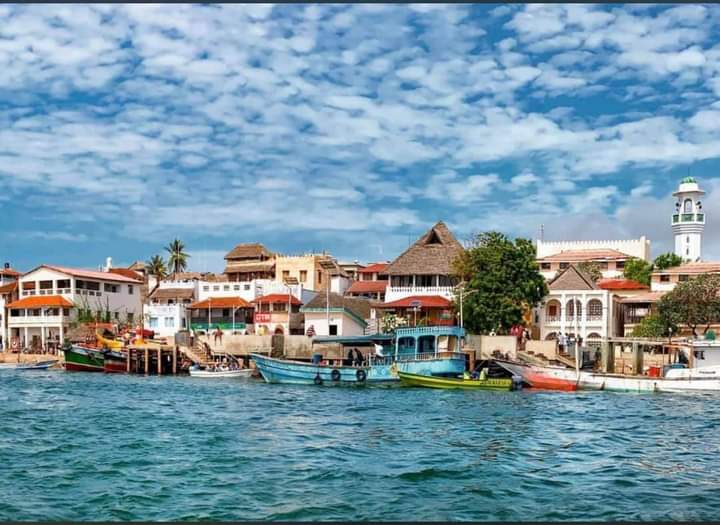
Experience the Lamu Cultural Festival in Mokowe: A Vibrant Window into Coastal Kenya
The Lamu Cultural Festival in Mokowe is a vibrant showcase of Swahili coastal heritage featuring dhow races, traditional dancing, and artisan crafts. This accessible festival offers travelers a unique opportunity to experience authentic Kenyan island life with practical ease.
Stay Hydrated for Coastal Heat
The festival occurs in November when the coastal sun can be intense. Carry sufficient water and refill frequently to avoid dehydration during outdoor events.
Wear Comfortable Footwear
Mokowe’s terrain includes sandy paths and uneven village lanes. Closed or sturdy sandals with good grip are best to navigate comfortably during the festival.
Plan Around Peak Event Times
Dhow races and main ceremonies are busiest midday. Visiting early morning or late afternoon gives cooler temperatures and less crowded conditions for photography and exploring.
Respect Local Customs
The festival centers around preserving Swahili culture—be mindful when photographing people, ask permission, and support local craftsmen by purchasing authentic goods.
Experience the Lamu Cultural Festival in Mokowe: A Vibrant Window into Coastal Kenya
The Lamu Cultural Festival, staged annually in Mokowe along Kenya's Coast Province, delivers a dynamic glimpse into Swahili heritage and island life. This lively event spans several days each November, when the normally quiet village pulses with song, dance, dhow races, and traditional crafts. Arriving in Mokowe, visitors immediately feel the salty breeze from the Indian Ocean teasing the senses, while the rhythmic beats of taarab music dare the crowd to move.
Culturally rich and accessible, Mokowe serves as the festival's gateway—just a short boat ride from Lamu Island. It’s here that you can witness the high-energy dhow races, where slender wooden sailboats, masterfully crafted and fiercely competitive, push against the ocean’s currents as if racing a wild pulse. Exploring the village between events offers practical insights: vendors display intricately woven mats and wooden carvings, while elders share centuries-old stories that shape the Swahili identity.
Navigating the festival requires planful preparation. The area is comfortably flat, so mobility is easy, but the coastal sun insists on reliable hydration and sun protection—carry water bottles and wear breathable, light clothing. Comfortable sandals or sturdy walking shoes suit the sandy, occasionally uneven terrain. Attendance peaks around midday; visiting early or late offers cooler temperatures and less congestion for exploration and photography.
Beyond the festivities, Mokowe and nearby Lamu offer quiet corners where the Indian Ocean whispers secrets through mangrove-fringed creeks and coral reefs. Be attentive to the environment: local communities prioritize conservation, and respecting the natural landscape includes minimal waste and supporting sustainable tourism.
For those seeking a unique cultural and outdoor experience on Kenya’s coast, the Lamu Cultural Festival in Mokowe provides both immersion and accessibility. Whether you’re here for the energizing races or the vibrant art, the event is a practical choice for travelers eager to engage directly with Kenya’s coastal heritage.
Prepare for a fusion of spirited celebration and grounded local tradition—in Mokowe, the land and sea are fiercely themselves, inviting you into their ongoing story.
Nearby Trips
All Adventures
Boat Charters
Water Activities
Adventures near Mokowe, Coast Province, Kenya
Discover the unique and memorable adventures that make Mokowe, Coast Province, Kenya special.
Frequently Asked Questions
How do I get to Mokowe for the Lamu Cultural Festival?
Mokowe is accessible from Lamu town via a short 20-30 minute boat ride. Alternatively, you can travel by road from Mombasa through the Coast Province, but timing a boat trip is crucial for easy access.
Are the dhow races open to all visitors?
Yes, the dhow races are public events, free to watch from various viewpoints along the coastline in Mokowe. Arriving early secures a good viewing spot and reduces crowd challenges.
What wildlife might I encounter near Mokowe during the festival?
While the festival is cultural, the surrounding mangroves and ocean waters host endemic bird species like kingfishers and mangrove warblers, with occasional glimpses of dolphins offshore.
Is the Lamu Cultural Festival family-friendly?
Absolutely. The festival offers a safe environment for all ages with engaging activities such as storytelling, traditional crafts, and outdoor performances suitable for families.
Are there quieter times to explore Mokowe during the festival?
Early mornings and late afternoons provide quieter opportunities for exploration, letting you engage with local artisans and natural scenery with fewer crowds and cooler temperatures.
How does the community work to protect the environment during the festival?
Locals actively promote waste management during the festival and encourage visitors to minimize plastic use and respect natural habitats, particularly the sensitive mangrove ecosystems nearby.
Recommended Gear
Wide-brimmed hat
Provides necessary shade under the strong November sun during outdoor festival events.
Reusable water bottle
Critical to stay hydrated throughout the day in the warm coastal climate.
Lightweight walking shoes
Necessary for traversing sandy and uneven terrain comfortably during village exploration.
Sunscreen with high SPF
Protects exposed skin from prolonged sun exposure during midday activities.
Local Insights
Hidden Gems
- "Mangrove boardwalks with quiet views of tidal channels"
- "Secluded beaches west of Mokowe where few tourists venture"
Wildlife
- "Mangrove kingfishers"
- "Little herons"
- "Dolphins occasionally seen offshore"
History
"Mokowe and Lamu Island are part of an ancient Swahili trading network dating back to the 14th century, blending Arab, African, and Persian influences that shaped coastal Kenyan culture."
